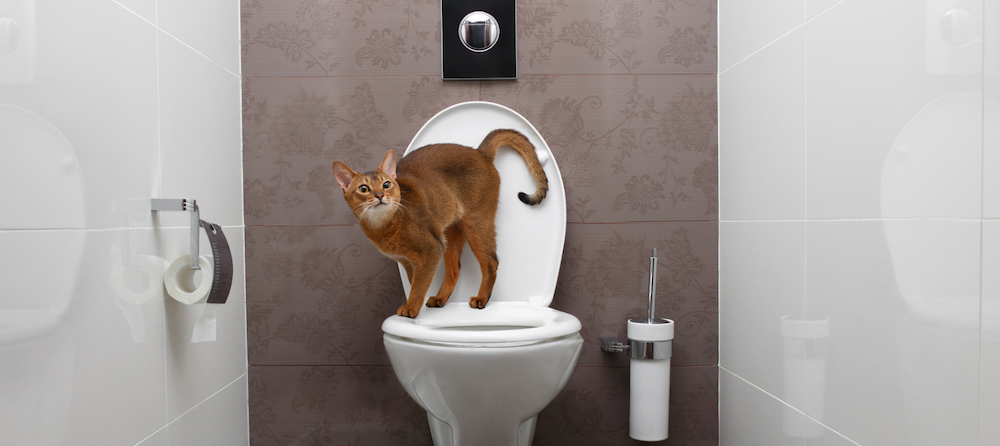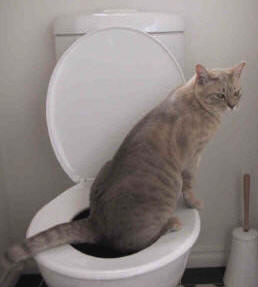Potential Risks of Flushing Cat Poop Down Your Toilet - Tips for Safer Handling
Potential Risks of Flushing Cat Poop Down Your Toilet - Tips for Safer Handling
Blog Article
Everyone seems to have their own individual way of thinking on the subject of Don’t flush cat feces down the toilet.

Introduction
As feline owners, it's important to bear in mind exactly how we dispose of our feline buddies' waste. While it may appear practical to flush pet cat poop down the toilet, this method can have detrimental consequences for both the atmosphere and human wellness.
Environmental Impact
Flushing feline poop introduces unsafe pathogens and parasites into the supply of water, presenting a considerable danger to water ecological communities. These impurities can adversely affect marine life and compromise water quality.
Health Risks
Along with ecological worries, flushing cat waste can additionally posture health and wellness risks to humans. Pet cat feces may contain Toxoplasma gondii, a bloodsucker that can trigger toxoplasmosis-- a possibly serious illness, specifically for expecting females and people with damaged body immune systems.
Alternatives to Flushing
Luckily, there are safer and much more accountable methods to take care of feline poop. Think about the following options:
1. Scoop and Dispose in Trash
The most common method of throwing away pet cat poop is to scoop it into an eco-friendly bag and toss it in the trash. Make sure to make use of a devoted trash inside story and throw away the waste promptly.
2. Use Biodegradable Litter
Go with naturally degradable feline litter made from materials such as corn or wheat. These litters are eco-friendly and can be securely disposed of in the garbage.
3. Hide in the Yard
If you have a yard, consider hiding feline waste in a designated location far from vegetable gardens and water resources. Make sure to dig deep enough to stop contamination of groundwater.
4. Set Up a Pet Waste Disposal System
Invest in a pet garbage disposal system particularly developed for pet cat waste. These systems utilize enzymes to break down the waste, reducing odor and ecological effect.
Conclusion
Accountable family pet possession extends past providing food and shelter-- it likewise involves appropriate waste management. By refraining from purging cat poop down the toilet and going with alternate disposal approaches, we can minimize our environmental footprint and secure human wellness.
Why Can’t I Flush Cat Poop?
It Spreads a Parasite
Cats are frequently infected with a parasite called toxoplasma gondii. The parasite causes an infection called toxoplasmosis. It is usually harmless to cats. The parasite only uses cat poop as a host for its eggs. Otherwise, the cat’s immune system usually keeps the infection at low enough levels to maintain its own health. But it does not stop the develop of eggs. These eggs are tiny and surprisingly tough. They may survive for a year before they begin to grow. But that’s the problem.
Our wastewater system is not designed to deal with toxoplasmosis eggs. Instead, most eggs will flush from your toilet into sewers and wastewater management plants. After the sewage is treated for many other harmful things in it, it is typically released into local rivers, lakes, or oceans. Here, the toxoplasmosis eggs can find new hosts, including starfish, crabs, otters, and many other wildlife. For many, this is a significant risk to their health. Toxoplasmosis can also end up infecting water sources that are important for agriculture, which means our deer, pigs, and sheep can get infected too.
Is There Risk to Humans?
There can be a risk to human life from flushing cat poop down the toilet. If you do so, the parasites from your cat’s poop can end up in shellfish, game animals, or livestock. If this meat is then served raw or undercooked, the people who eat it can get sick.
In fact, according to the CDC, 40 million people in the United States are infected with toxoplasma gondii. They get it from exposure to infected seafood, or from some kind of cat poop contamination, like drinking from a stream that is contaminated or touching anything that has come into contact with cat poop. That includes just cleaning a cat litter box.
Most people who get infected with these parasites will not develop any symptoms. However, for pregnant women or for those with compromised immune systems, the parasite can cause severe health problems.
How to Handle Cat Poop
The best way to handle cat poop is actually to clean the box more often. The eggs that the parasite sheds will not become active until one to five days after the cat poops. That means that if you clean daily, you’re much less likely to come into direct contact with infectious eggs.
That said, always dispose of cat poop in the garbage and not down the toilet. Wash your hands before and after you clean the litter box, and bring the bag of poop right outside to your garbage bins.
https://trenchlesssolutionsusa.com/why-cant-i-flush-cat-poop/

I came across that piece of writing about How to Dispose of Cat Poop and Litter Without Plastic Bags while doing a lookup on the web. For those who enjoyed our blog entry if you please be sure to share it. I am grateful for your time. Kindly pay a visit to our website back soon.
Get Offer Report this page